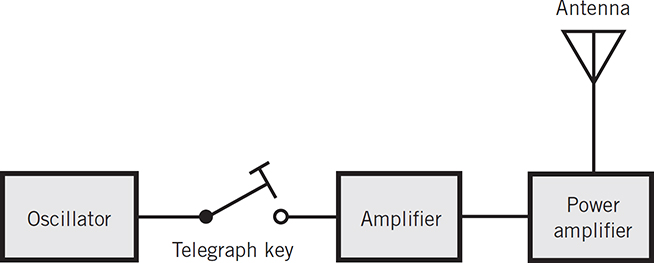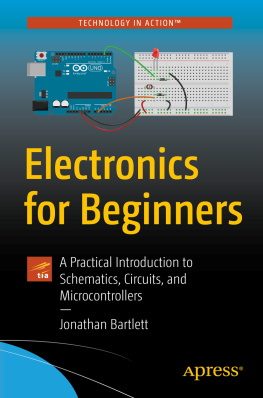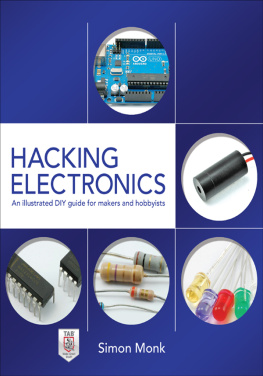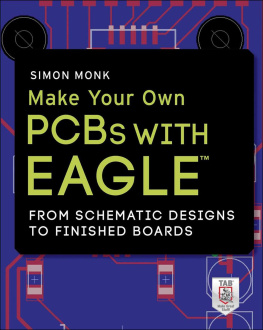Contents
Guide
Page List


Copyright 2018, 2014, 1991, 1983 by McGraw-Hill Education. All rights reserved. Except as permitted under the United States Copyright Act of 1976, no part of this publication may be reproduced or distributed in any form or by any means, or stored in a data base or retrieval system, without the prior written permission of the publisher.
ISBN: 978-1-26-003111-9
MHID: 1-26-003111-X.
The material in this eBook also appears in the print version of this title: ISBN: 978-1-26-003110-2, MHID: 1-26-003110-1.
eBook conversion by codeMantra
Version 1.0
All trademarks are trademarks of their respective owners. Rather than put a trademark symbol after every occurrence of a trademarked name, we use names in an editorial fashion only, and to the benefit of the trademark owner, with no intention of infringement of the trademark. Where such designations appear in this book, they have been printed with initial caps.
McGraw-Hill Education eBooks are available at special quantity discounts to use as premiums and sales promotions or for use in corporate training programs. To contact a representative, please visit the Contact Us page at www.mhprofessional.com.
Information contained in this work has been obtained by McGraw-Hill Education from sources believed to be reliable. However, neither McGraw-Hill Education nor its authors guarantee the accuracy or completeness of any information published herein, and neither McGraw-Hill Education nor its authors shall be responsible for any errors, omissions, or damages arising out of use of this information. This work is published with the understanding that McGraw-Hill Education and its authors are supplying information but are not attempting to render engineering or other professional services. If such services are required, the assistance of an appropriate professional should be sought.
TERMS OF USE
This is a copyrighted work and McGraw-Hill Education and its licensors reserve all rights in and to the work. Use of this work is subject to these terms. Except as permitted under the Copyright Act of 1976 and the right to store and retrieve one copy of the work, you may not decompile, disassemble, reverse engineer, reproduce, modify, create derivative works based upon, transmit, distribute, disseminate, sell, publish or sublicense the work or any part of it without McGraw-Hill Educations prior consent. You may use the work for your own noncommercial and personal use; any other use of the work is strictly prohibited. Your right to use the work may be terminated if you fail to comply with these terms.
THE WORK IS PROVIDED AS IS. McGRAW-HILL EDUCATION AND ITS LICENSORS MAKE NO GUARANTEES OR WARRANTIES AS TO THE ACCURACY, ADEQUACY OR COMPLETENESS OF OR RESULTS TO BE OBTAINED FROM USING THE WORK, INCLUDING ANY INFORMATION THAT CAN BE ACCESSED THROUGH THE WORK VIA HYPERLINK OR OTHERWISE, AND EXPRESSLY DISCLAIM ANY WARRANTY, EXPRESS OR IMPLIED, INCLUDING BUT NOT LIMITED TO IMPLIED WARRANTIES OF MERCHANTABILITY OR FITNESS FOR A PARTICULAR PURPOSE. McGraw-Hill Education and its licensors do not warrant or guarantee that the functions contained in the work will meet your requirements or that its operation will be uninterrupted or error free. Neither McGraw-Hill Education nor its licensors shall be liable to you or anyone else for any inaccuracy, error or omission, regardless of cause, in the work or for any damages resulting therefrom. McGraw-Hill Education has no responsibility for the content of any information accessed through the work. Under no circumstances shall McGraw-Hill Education and/or its licensors be liable for any indirect, incidental, special, punitive, consequential or similar damages that result from the use of or inability to use the work, even if any of them has been advised of the possibility of such damages. This limitation of liability shall apply to any claim or cause whatsoever whether such claim or cause arises in contract, tort or otherwise.
About the Author
Stan Gibilisco, an electronics engineer, mathematician, and radio hobbyist, has authored numerous titles for the McGraw-Hill Demystified and Know-It-All series, along with dozens of other technical books and magazine articles. His work appears in several languages in countries throughout the world. Stan has been an active amateur radio operator since 1966. His currently holds the call sign W1GV.
In Memory of Jack
Contents
Introduction
Have you caught the electronics bug and then balked at the sight of diagrams with arcane symbols when you decided to build, troubleshoot, or repair something? If so, you have the solution in your hands.
Dont give up on electronics when you encounter strange-looking circuit diagrams. You dont quit your favorite sport because you fear the rigors of training, do you? No! You get into condition with practice. Schematic diagrams (or schematics), sensibly drawn and neatly arranged, can help you design, build, maintain, and repair electronic equipment. But you must do some work to gain skill at reading and interpreting schematics.
As you plan a trip by car, road maps show you how to navigate the countryside. As you work with electronic equipment, schematics show you the way through simple circuits, complex devices, and massive systems. Once you know what the symbols represent, youll find schematics no more difficult than road maps.
While you read this book, youll learn the rationale of schematics, how to draw or interpret each symbol, and how the symbols interconnect to form functional circuits. Youll also get a chance to do a few simple experiments. Then you can continue your quest in any field of electronics from amateur radio to space communications, from surround sound to virtual reality.
Youll find my website at www.sciencewriter.net. I also create videos; simply search YouTube for my name. Have fun!
Stan Gibilisco
1
The Master Plan
Youll encounter three types of diagrams in electricity and electronics literature. Each style serves a unique purpose. When you buy an electric or electronic device or system, it should (in the ideal case) come with an operating and maintenance manual that includes all three types of diagrams.
A block diagram gives you an overview of how the individual circuits in a system work together. Youll see each circuit represented as a block (rectangle or other shape, depending on the application). Interconnecting lines, sometimes with arrows on one or both ends, show how the circuits combine to form the whole system, and how currents and signals flow among those circuits. is a simple example.

FIG. 1-1Block diagram of a radio transmitter that can send signals in Morse code.
A schematic diagram (often simply called a schematic) shows every component in a circuit. Each component has its own special symbol. Lines between the components reveal how they connect together, and to a source of power, so they perform a specific function or operation. This book deals mostly with schematics. is a simple example.











